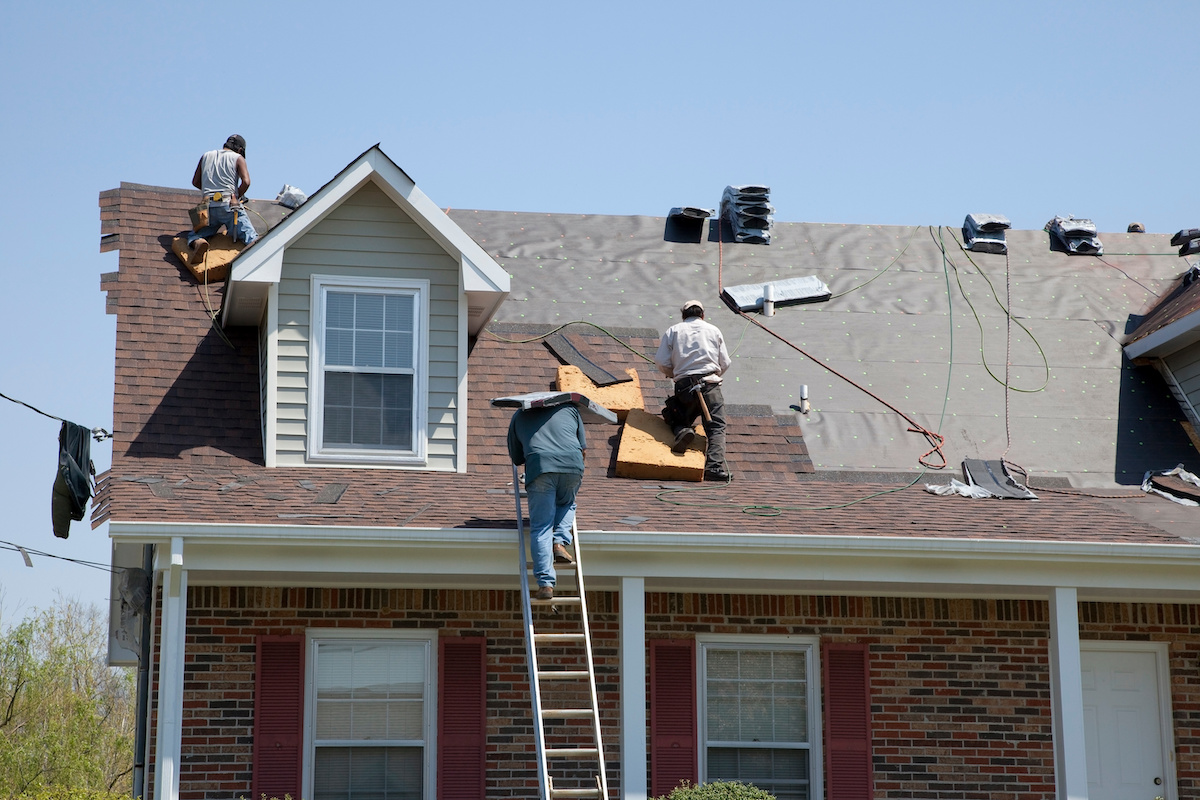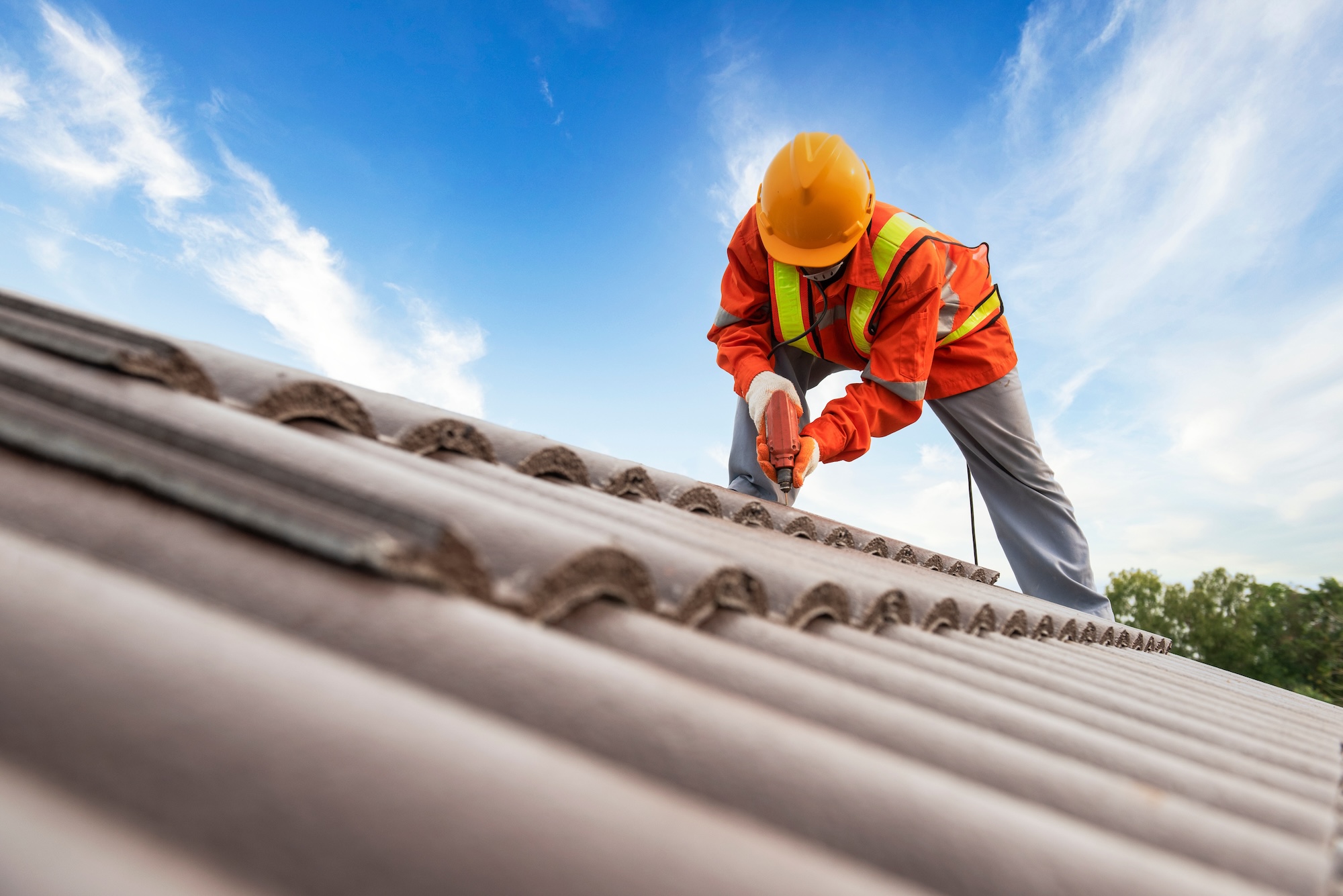
What Is The Best Way To Finance Home Improvements With Bad Credit?
Dealing with a home improvement project can often be stressful and overwhelming, especially when the pricing for your home improvement project comes with intimidating sticker shock. As a homeowner, though, you know that keeping your home in good health is a non-negotiable in order to keep yourself and your loved ones safe and comfortable.
We often experience homeowners who need help finding a way to fund their home improvement projects, leading them to ask us, “what is the best way to finance home improvements with bad credit”? But don’t fret because the good news is this: there are still options available to you, even with a less-than-ideal credit score.
Let’s start by defining what is considered to be a “bad” credit score. Credit Karma states, “a credit score below 600 is generally considered a bad credit score, with scores up to the low 600s still below the average.”
If you find yourself with a score in the low 600s range or even less, there are several funding options you can consider to get your home improvement project started.
Funding Options to Consider With a Low or Bad Credit Score

1. A Home Equity Loan
Did you know that a home equity loan is more likely to be approved at a lower interest rate by a lender? This is because your home is the financial collateral in this type of agreement, making you less of a risk from the lender’s perspective. A home equity loan can provide you with the funding you need to cover your home improvements by setting you up with a lump sum of money you repay in regular installments, typically at a fixed interest rate, over anywhere from 10 to 30 years. It is worth noting the following before securing a home equity loan:
Only borrow what you need to keep interest rates down.
Shop around for different interest rates.
Don’t forget about the additional loan processing and closing costs.
Consider a cosigner.
The lender could foreclose on your property if not paid.
See how home equity loans and HELOCs compare.
Other things to consider when looking into loans for home improvements with bad credit:
APR: Annual Percentage Rate: The annual percentage rate (APR) represents the comprehensive cost associated with a loan, encompassing any fees imposed by the lender. APRs typically range from 6% to 36%, although individuals with lower credit scores can anticipate being offered rates towards the higher end of the lender’s spectrum. Utilize the APR as a means to compare the expenses associated with personal loans and alternative financing choices.
Monthly Payments: When contemplating home equity loans, it’s essential to factor in the regular monthly payments. These payments offer a structured and predictable financial obligation. But remember, if you’re facing credit challenges, it’s crucial to carefully navigate the waters of monthly loan payments.
Repayment Terms: In the case of home improvement loans for individuals with poor credit, the repayment terms commonly span from one to seven years, although certain lenders may offer more limited options. Opting for a longer repayment period results in reduced monthly installments but incurs higher overall interest expenses. Therefore, it’s advisable to seek a term that strikes a balance between the two.
Fast Funding: Numerous lenders can disburse loan funds in less than a week, with some even claiming to provide funds on the same day as the application submission. If you’re in need of urgent funds for immediate repairs or an ongoing project, seek out a lender offering expedited funding services.
2. A Home Equity Line of Credit (HELOC)
A home equity loan also uses the equity in your home as collateral. However, they work differently from home equity loans. Rather than borrowing a fixed amount of money, a HELOC allows you to borrow from a line of credit that you can use as needed on a revolving basis.
Again, this is less risky for lenders since your debt is tied to your homeownership, so you’re more likely to be able to secure a HELOC with a lower credit score. When borrowing money through a HELOC, ask yourself:
Do I have enough equity in my home?
Will I be able to pay the HELOC back to avoid foreclosure on my home?
How long is my HELOC draw period? (the amount of time you can withdraw money for)
Will my HELOC interest rate increase after the draw period?
How long will I be making payments for?
For more information on HELOCs, weigh the pros and cons here.
3. Personal Loans
A personal loan is a loan that is unsecured, meaning it is not backed by collateral (like how HELOCs and home equity loans use your home for collateral). For this reason, more risk is involved when lenders give out these types of loans. Because of the lack of collateral, personal loans are usually more expensive but a more viable option for those with poor credit scores. Remember that the lower your credit score, the more likely you are to encounter higher interest rates. For this reason, it’s worth your time to compare personal loan interest rates to the interest rates of each of the funding options mentioned in this blog (home equity loans, HELOCs, credit cards and Florida PACE). Additionally, consider asking yourself these questions while researching funding options:
Are there fees and penalties involved?
Will this damage my credit score further?
Is the loan provider asking for collateral because of your low credit score?
Is the interest rate realistic for me?
Continue comparing your home improvement funding options with more information on personal loans from Forbes.
4. Credit Cards
If you have bad credit, you may still be able to get a credit card, depending on how low your score is. Credit cards typically have higher interest rates than other types of loans, but they can be a great way to finance a home improvement project that is on the less expensive side. If you’re considering using a credit card to fund your home improvements, consider applying for a new credit card with a 0% APR throughout the first year. This way, you can avoid the extra interest fees getting tacked onto your expensive home improvement project. As stated in each funding option throughout this blog, ask yourself if using a credit card is the best option for you. Consider the following:
Will I overspend if I use a credit card?
Are there cheaper funding options?
What is my current debt-to-income ratio?
Can I get a credit card with a high enough limit to cover the cost?
Find more information on using credit cards for your home improvement here.
5. Florida PACE
Funding home improvement projects with bad credit can be a tricky thing to do. And while it’s not impossible, we understand that it sure can feel that way when you’re in need of critical repairs or replacements for your home.PACE stands for Property Assessed Clean Energy — an energy conservation and hurricane protection funding agency that assists homeowners with expensive but necessary home improvement projects. Keep in mind that this includes hundreds of home improvement projects. Whether it’s HVAC, windows, doors, or something different, Florida PACE can likely help you get the funding you need, even with poor credit. While the Florida PACE program comes along with many benefits for those with poor credit scores, like low interest rates, no minimum score required, quick approval, no downpayment and more, you’ll also want to ask yourself these questions before making a decision on how to fund your home improvements:
Will I experience difficulty selling or refinancing my home if I can’t pay it in full before then?
Will I be able to pay my PACE assessment in full each year to avoid a lien on my property?
Am I comfortable with my PACE assessment being tied to my home ownership?
How do I feel about my PACE payments being added to my yearly property taxes?
Have bad credit but need home improvement financing? Getting started on your home improvement project with Florida PACE is simple:
1. Apply for the Florida PACE Program: Find out if your home’s location and project qualify. (Hundreds of areas and project types do!) Submit an application and get a pre-approval in minutes.
2. Select Your Preferred Contractor: You get to pick your contractor of choice! The financial service provider (Florida PACE) can educate and authorize the contractor if they are not already familiar with PACE. Or, you can ask the financial service provider (Florida PACE) for their list of PACE-approved contractors and then pick.
3. Florida PACE Authorizes Your Contractor’s Payment: Your preferred contractor will get started with your home-improvement project and won’t be paid until you notify us of its completion, as well as your satisfaction with the results of your project.
4. Make Fixed Payments as Outlined in Your Plan: Your fixed payments will appear on your annual property tax bill at a fixed rate. There are no adjustments to interest rates, no balloon payments and no prepayment fees.
Find more information on how Florida PACE can help you fund your home improvement project.
Am I able to pay for all or most of the project before the introductory rate ends?
Ready to Take the Next Step?

Whether you’re replacing a roof, upgrading windows or tackling another urgent home improvement (even with a less-than-perfect credit score), Florida PACE can help you move forward confidently. With no minimum credit score, fixed rates and no money down, PACE gives you a flexible way to fund critical improvements without the roadblocks of traditional financing.
If you’re ready to explore what’s possible for your home, apply today to see if your project qualifies.



